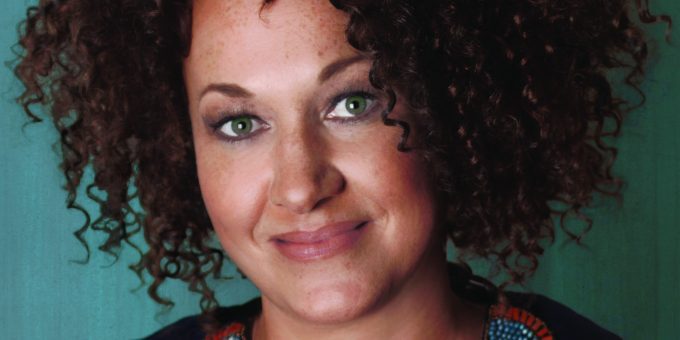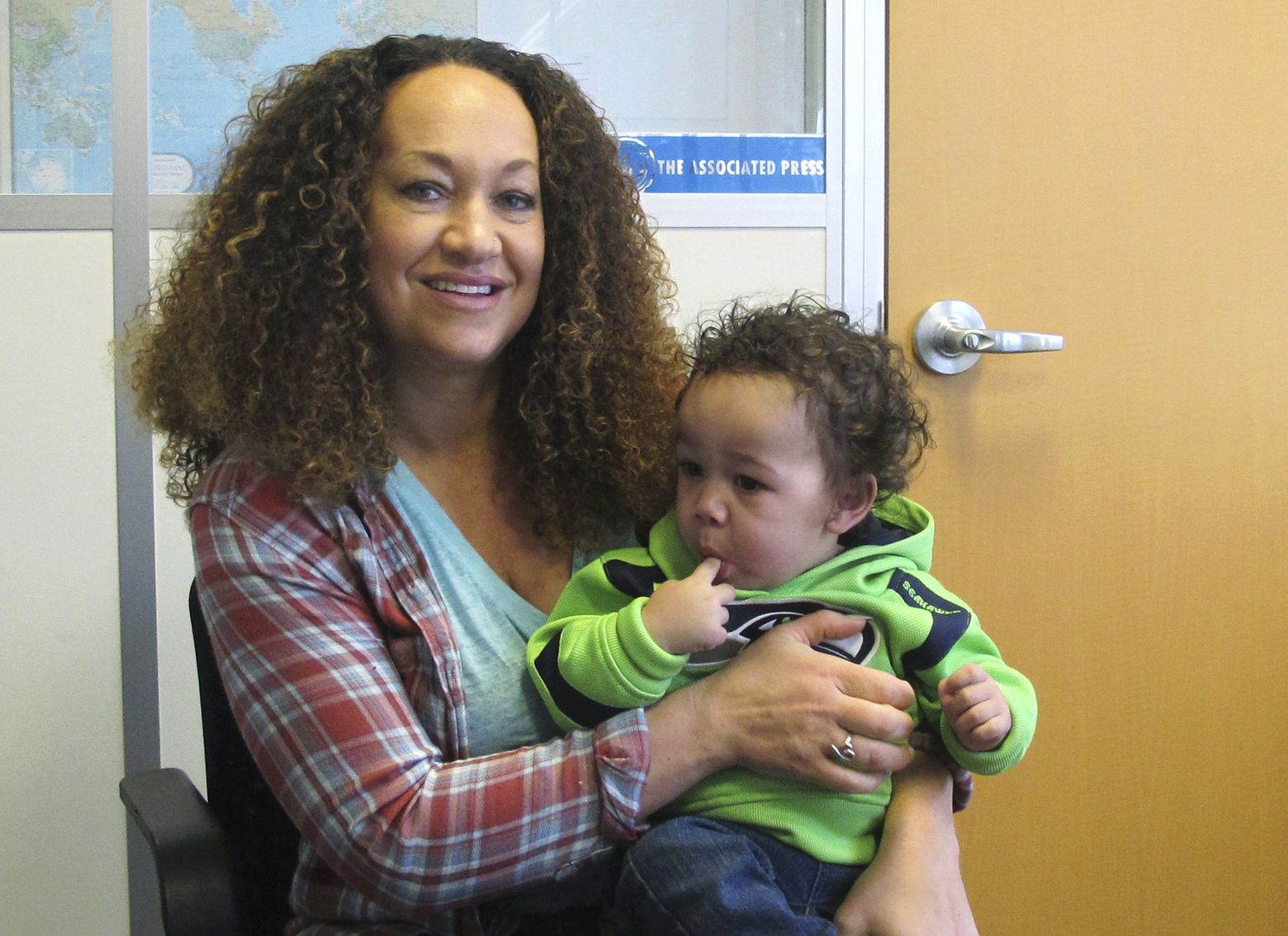The contradiction at the heart of Rachel Dolezal’s ‘transracialism’Posted in Articles, Communications/Media Studies, History, Literary/Artistic Criticism, Media Archive, Passing, Slavery, United States on 2017-04-12 02:16Z by Steven |
The contradiction at the heart of Rachel Dolezal’s ‘transracialism’
The Conversation
2017-04-11
Victoria Anderson, Researcher/Teacher in Journalism, Media and Cultural Studies
Cardiff University
 Rachel Dolezal speaking at Spokane rally, May 2015. Arkathman/Wikipedia, CC BY-SA |
Rachel Dolezal, the former branch president of the National Association for the Advancement of Colored People (NAACP) who gained global notoriety in 2015 after being “outed” as a white woman pretending to be black, is back with a new book on race. Dolezal, who is ethnically German, now claims that she is “transracial”, a condition she compares to transgenderism. By this she means that although she was born white, she identifies with being black, arguing that race is a social construct.
Dolezal complains of further victimisation because “transracialism” is not recognised in the same way as transgenderism. And Dolezal sees herself as triply stigmatised; because of her race, because of her trans status and also because of the perceived illegitimacy of this status.
For someone like me, concerned both with race and with the role of narrative in culture, the narrative spun by Dolezal is both confounding and uniquely fascinating. In an interview with BBC Newsnight, she announced – not incorrectly, in my view – that “race is a lie”. At the same time, she laid claim to the transracialism that she demands to be accepted as a truth…
…Blanket categories of “black” and “white” are an entirely modern phenomenon. In the 17th and 18th centuries, those Europeans who were actively involved in the slave trade made a point of distinguishing between different African ethnic groups; some were considered to be better house slaves, others better field slaves. The Igbo people, for instance, were considered prone to suicidal ideation, which posed problems for the incipient slaver. In the early days of “race” as we know it, there really was no sense of the generic catch-all blackness to which Dolezal lays claim.
As generations passed, ideas of “black” and “white” were further complicated by the complex striations of racial coding that were implemented both during and after slavery, across the Americas, as a consequence of voluntary and involuntary coupling between Europeans and Africans.
This led to a dizzying taxonomy of racial mixes, including (but not confined to) so-called mulattoes, quadroons, octoroons, tercerons, quintroons and beyond, depending on how many generations back a person’s African ancestry was traced. A person might be able to pass as white if their direct African ancestry was three or four generations removed – although if their relative “blackness” was discovered, it was a source not only of shame but was a precondition of legal slavery…
Read the entire article here.





